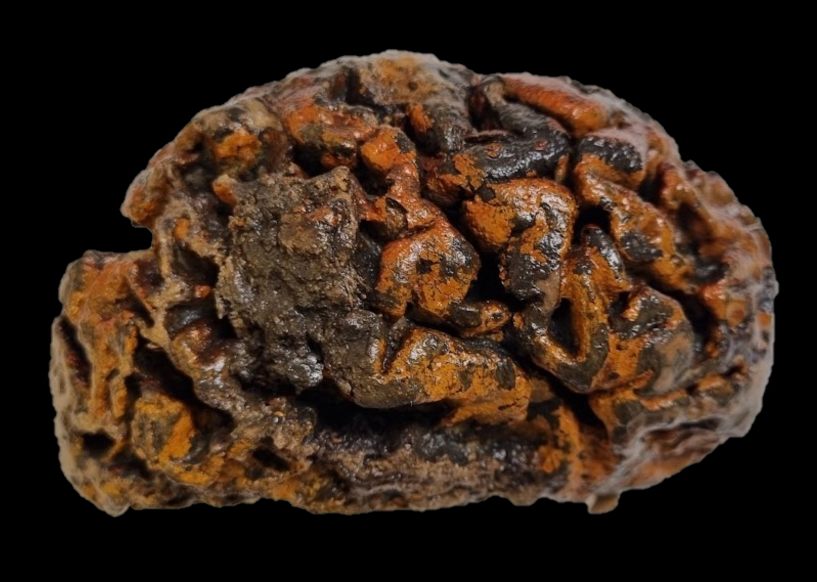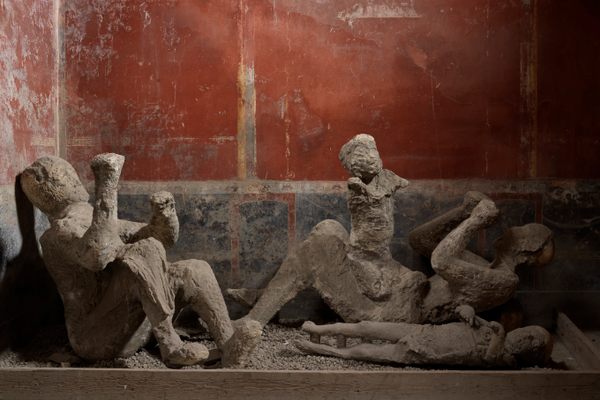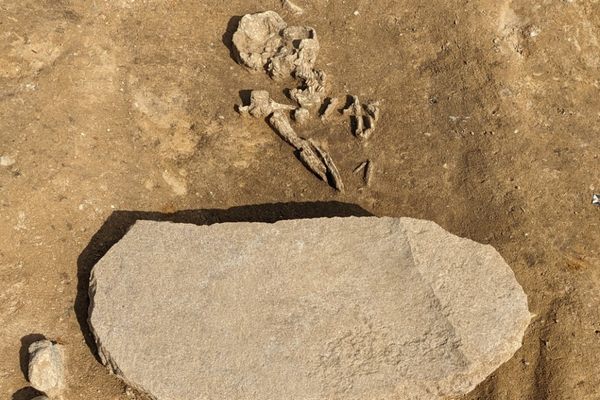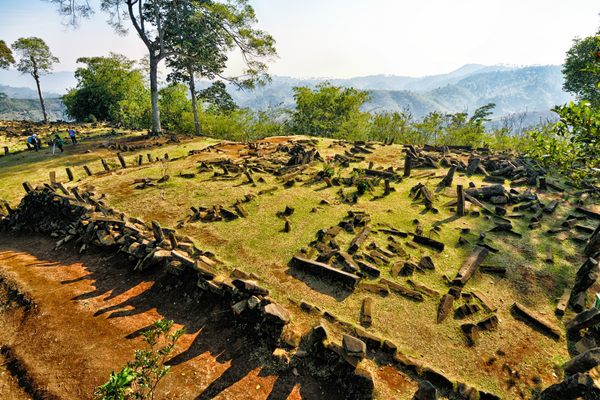The Mystery of 4,400 Preserved Brains—And One Scientist’s Quest to Solve It
The former undertaker collects human brains, talks to them, and hopes they won’t haunt her.
As Alexandra Morton-Hayward stacks jam jars and Chinese takeout boxes containing human brains into the trunk of her car, she talks to them. “Alright, you guys, you’re going to go on top of each other, and I want you to stay on this side of the box. And you, I’m going to set you guys next to each other,” she tells them. This communication, she feels, is necessary; after all, “I don’t want them to haunt me.”
Morton-Hayward is an undertaker-turned-palaeobiologist at the University of Oxford. She has collected hundreds of brains, sometimes piling them into IKEA bags packed with dry ice and driving them back to the lab “like an 80-year-old grandma with a box of eggs on the seat,” as she puts it.
“It’s always a weird day when you set off in your car to go and collect a load of human brains,” she adds. After one of her recent trips to collect the remains from a dig site in South West England, she gathered 162 out of the 400 brains found in a 19th-century workhouse burial ground. It isn’t entirely unheard of to find brains preserved in the ground, but these ones were the only soft tissue left in the remains. And that makes them quite odd.

Normally, our brains are the first to go when we die. The squishy, soft tissue that controls every function vital to life turns to liquid before any other organ decays—except when it inexplicably remains intact for hundreds or even thousands of years in the ground. That’s what researchers have realized is happening, as published in a new study on some 4,400 preserved brains recovered since the 17th century. The phenomenon was thought to be exceptionally rare before now.
Morton-Hayward is part of a team determined to find out why some brains bypass the carbon cycle while the rest start decomposing within minutes. “I have long been completely obsessed with death,” she says, “the decomposition and all the horrible, morbid things that folks don’t like thinking about.” She first learned of brain preservation during the coronavirus pandemic, while pursuing a master’s degree in forensic anthropology and working as an embalmer by night. By the time travel restrictions lifted, she had plans to visit Denmark, where archaeologists had unearthed 10 brains once belonging to medieval monks.
“These skeletons were incredible,” (even “beautiful,” as she later describes them), “because a lot of the bones had been pyritized, so they were covered in fool’s gold.” In humid conditions, skeletons can oxidize and form an iron sulfate, which results in the growth of crystals all over the bones. Despite their resplendence, Morton-Hayward looked past the impressive bones to the internal organs. “That was the first ancient brain I held in my hand,” she recalls. She was hooked.

No stranger to working with dead bodies and body parts as an undertaker, Morton-Hayward now spends much of her working life surrounded by hundreds of ancient brains. As a doctoral candidate at Oxford, she has become a bona fide collector of archaic encephala. So far, her team has collected more than half of all recorded brains with unknown preservation mechanisms: about 570 from 12 sites across Europe and North America, some dating back 8,000 years. The brains are refrigerated—freezing would compromise them, Morton-Hayward says—and are currently filling four fridges at the University of Oxford.
“I’m endlessly running out of space, constantly buying new fridges,” she says. “When Russia invaded Ukraine and there was an energy crisis [in the U.K.], I bought a generator, just in case.”
She’s now helped research the mechanism of preservation for the 4,400 brains analyzed in the study. Morton-Hayward compares the texture of the brains to tofu. They’re often wet and mushy, all different colors from bright orange to black, and about five times smaller than the average size of a living brain. In some more understandable cases, the brains are preserved with the entire body due to the environmental surroundings; but in other cases, the brains were the only internal organ to survive.
For the majority of cases, the paper identifies four definitive explanations for how the brains persisted through time: dehydration, freezing, saponification, and tanning. These mechanisms occur in brains found with other preserved soft tissue, such as “in the desiccated remains of desert burials, the frozen corpses of mountain passes, and the tanned bog bodies of low-lying wetlands,” the study says. “However, the preservation of brains in the absence of other soft tissues—for example, among ancient human bones dredged from a swampy pond—is unexpected, poorly reported, and represents an untapped source of bioarchaeological information.”

This is the mystery of the fifth mechanism, accounting for about 30 percent of all preserved brains in the archaeological record. This unknown cause is the second most common, too, behind dehydration, and it’s been discovered all over the world, from Florida to Italy, South Africa, New Zealand, and Japan. Specimens span a 12,000-year period, some dating back to the turn of the Holocene or earlier.
The study hypothesizes that the mysterious preservation mechanism could be molecular crosslinking, in which molecules are joined by a chemical bond. This could be a substance in the soil that helps stabilize the brain and preserve it. If their theory is right, it could inform current research on brain aging and neurodegenerative disorders like dementia.
“I strongly feel that these things, these brains, these human remains … they are our pilot work, at least. It’s showing that they are a hugely rich source of ancient biomolecules that we know and love as archaeologists, because they can tell us all the things about past human life,” says Morton-Hayward. “But until we know how they’ve preserved, we won’t know how to maximize the information that’s recoverable for them, so that’s definitely the first hurdle.”












Follow us on Twitter to get the latest on the world's hidden wonders.
Like us on Facebook to get the latest on the world's hidden wonders.
Follow us on Twitter Like us on Facebook